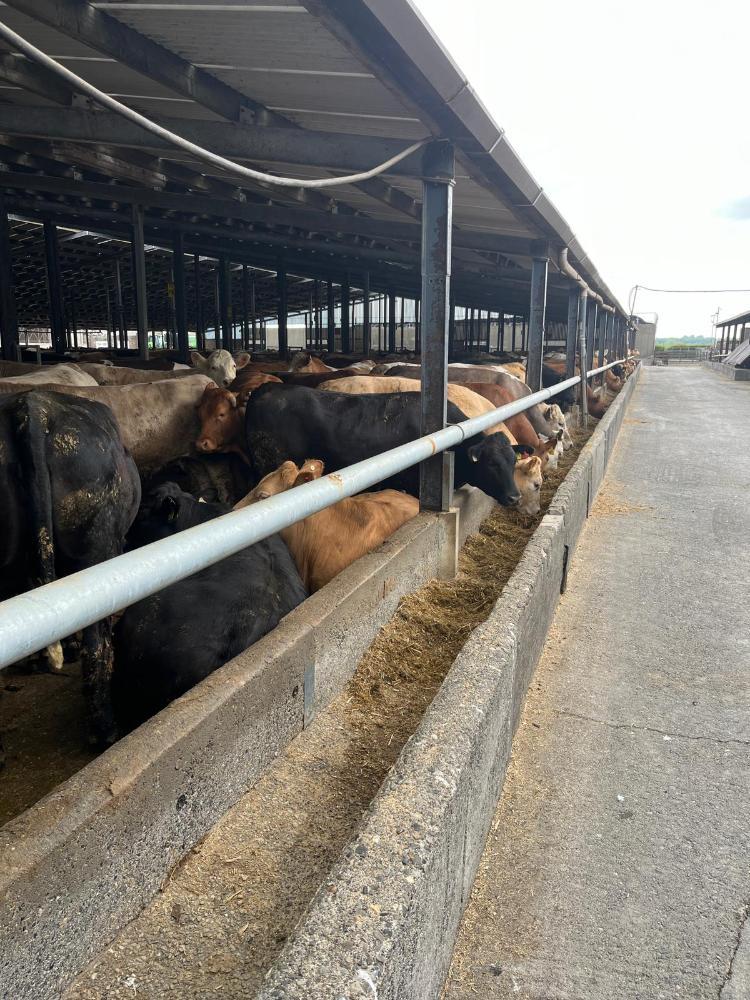Less Stress Means More Success on Kepak’s Farm in Caulstown, Co. Meath

Finishing cattle in a shed on the Kepak farm
The Kepak team, understands the science behind stress and how it impacts animal welfare and productivity. Elevated cortisol levels don’t just affect cattle behaviour – they suppress immunity, leaving livestock more vulnerable to disease.
The Solution: Calm Environments and Structured Protocols
Kepak’s answer to this challenge, overseen by farm manager Sam Myles, is a combination of:
- A quiet environment
- Consistent handling
- A structured 24-hour rest period before any interventions
This initial “cooling-off” window allows animals to recover from transport stress, helping cortisol levels to fall and ensuring vaccination programmes are more effective.
Vaccination: A Carefully Planned Protocol
Vaccination begins the day after animals arrive, with each one receiving the same carefully planned protocol:
- Intranasal RSV and Pi3 Vaccine
These are common respiratory viruses in Irish cattle.
- Frank O Sullivan, vet to the Kepak farm, and Kieran O’Mahony, Area Veterinary Manager at Zoetis, demonstrated the correct use of the applicator.
- The broad mist delivers droplets deep into the nasal passages – the typical entry point for viruses.
- This method offers rapid, localised immunity – just five days for RSV – and works faster than traditional injectable vaccines.
- As animals often come from different sources, the risk of introducing IBR is high.
- A single intramuscular shot provides protection for six months.
- Targets diseases like blackleg and tetanus, essential for herd protection.
Targeted Parasite Control
Parasite treatments at Kepak are not given routinely. Instead, decisions are based on:
- Faecal testing
- Thrive rates
- Factory reports
This targeted approach avoids unnecessary treatments and supports more sustainable management.
Housing That Promotes Calm
After vaccination, cattle are housed in small, stable groups. These are designed to:
- Prevent hierarchy struggles and bullying
- Reduce stress and support immune function
Animals remain in the same group and same pen for the entire finishing period.
Results That Speak Volumes
As we toured the farm, one thing stood out: the calmness and contentment of the cattle.
This calm environment has led to:
- A dramatic drop in antibiotic use
- Reduced incidence of subclinical disease
- Better weight gain
- Improved feed efficiency
- Lower mortality rates
A Model for the Future
With increasing pressure to reduce antibiotic use and improve animal welfare, Kepak’s Caulstown model offers a clear message.
